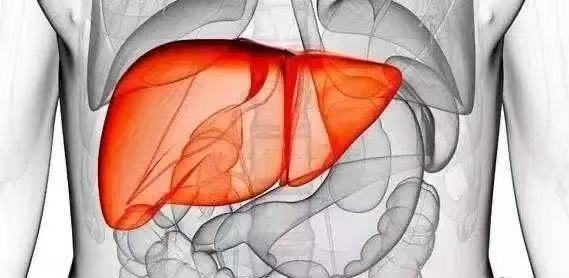| Overview A cancer that starts in the liver is called primary liver cancer. There are several kinds of primary liver cancer, like Hepatocellular carcinoma (HCC), which is the most common form of liver cancer in adults, and Intrahepatic cholangiocarcinoma etc. Most of the time when cancer is found in the liver it did not start there but has spread (metastasized) from somewhere else in the body, such as the pancreas, colon, stomach, breast, or lung. Because this cancer has spread from its original (primary) site, it is called a secondary liver cancer. |  |
Symptom
Weight loss (without trying), loss of appetite, feeling very full after a small meal, nausea or vomiting, an enlarged liver, felt as fullness under the ribs on the right side, an enlarged spleen, felt as fullness under the ribs on the left side, pain in the abdomen (belly) or near the right shoulder blade, swelling or fluid build-up in the abdomen (belly), itching, yellowing of the skin and eyes (jaundice), white, chalky stool, other symptoms can include fever, enlarged veins on the belly that can be seen through the skin, and abnormal bruising or bleeding.
Treatment
Radiofrequency ablation (RFA) is an alternative therapy for hepatocellular carcinoma and liver metastases when resection cannot be performed or, in the case of hepatocellular carcinoma, when transplant cannot be performed in a timely enough manner to avoid the risk of dropping off the transplant list. RFA has the advantage of being a relatively low-risk minimally invasive procedure used in the treatment of focal liver tumors. A study reported that the efficacy and safety of percutaneous RFA were better than those of surgical resection with HCC measuring 2 cm, especially those with central HCC. (1) A study comparing resection or RFA in patients with a solitary HCC <5 cm reported 1- and 4-year overall survival rates after percutaneous RFA and surgery of 96%, 68%, and 93%, 64%,respectively. (2) The corresponding disease-free survival rates were 86%, 46%, and 87%, 52%, respectively. (2) A retrospective study comparing the outcome of RFA and trans-arterial chemoembolization (TACE) in patients with unresectable HCC found that the 1- and 2-year overall survival rates were 82% and 72%, respectively, in the RFA group and 80% and 58%, respectively, in the TACE group. (3) A second study found that the overall recurrence-free rate was significantly higher in the RFA group than in the TACE group: The 2-year local recurrence-free rates in the RFA and TACE groups were 60% and 49%, respectively. (4) Recurrent HCC occurs in 50 to 80% of patients at 5 years after resection, with the majority occurring within 2 years after resection. (5) RFA has been increasingly used in these patients,with cohort studies reporting the 5-year overall survival rate ranging from 18 to 52%. (5) Patients with untreated unresectable cholangiocarcinoma have a median survival of 3.9 months. (6) A recent study reported a median overall survival period of 38.5 months in patients with unresectable primary intrahepatic cholangiocarcinoma treated with RFA. (7) RFA has proved to be a safe and feasible treatment option for extending survival in select patients with liver metastases from many different primaries such as colorectal cancer (8,9), pancreatic cancer (10), cholangiocarcinoma (11), neuroendocrine tumors (12), breast cancer (13) and gastric cancer (14)
Reference list:
1. Peng ZW, Lin XJ, Zhang YJ, et al. Radiofrequency ablation versus hepatic resection for the treatment of hepatocellular carcinomas 2 cm or smaller: a retrospective comparative study. Radiology 2012;262(3):1022–1033
2. Chen MS, Li JQ, Zheng Y, et al. A prospective randomized trial comparing percutaneous local ablative therapy and partial hepatectomy for small hepatocellular carcinoma. Ann Surg 2006;243(3):321–328
3. Chok KS, Ng KK, Poon RT, et al. Comparable survival in patients with unresectable hepatocellular carcinoma treated by radiofrequency ablation or transarterial chemoembolization. Arch Surg 2006;141(12):1231–1236
4. Murakami T, Ishimaru H, Sakamoto I, et al. Percutaneous radiofrequency ablation and transcatheter arterial chemoembolization for hypervascular hepatocellular carcinoma: rate and risk factors forlocal recurrence. Cardiovasc Intervent Radiol 2007;30(4):696–704
5. LauWY, Lai EC. The current role of radiofrequency ablation in the management of hepatocellular carcinoma: a systematic review. Ann Surg 2009;249(1):20–25
6. Park J, Kim MH, Kim KP, et al. Natural history and prognostic factors of advanced cholangiocarcinoma without surgery, chemotherapy, or radiotherapy: a large-scale observational study. Gut Liver 2009;3(4):298–305
7. Kim JH, Won HJ, Shin YM, Kim KA, Kim PN. Radiofrequency ablation for the treatment of primary intrahepatic cholangiocarcinoma. AJR Am J Roentgenol 2011;196(2):W205-9
8. Kim KH, Yoon YS, Yu CS, et al. Comparative analysis of radiofrequency ablation and surgical resection for colorectal liver metastases. J Korean Surg Soc 2011;81(1):25–34
9. Van Tilborg AA, Meijerink MR, Sietses C, et al. Long-term results of radiofrequency ablation for unresectable colorectal liver metastases: a potentially curative intervention. Br J Radiol 2011;84(1002): 556–565
10. Park JB, Kim YH, Kim J, et al. Radiofrequency ablation of liver metastasis in patients with locally controlled pancreatic ductal adenocarcinoma. J Vasc Interv Radiol 2012;23(5):635–641
11. Park SY, Kim JH, Won HJ, Shin YM, Kim PN. Radiofrequency ablation of hepatic metastases after curative resection of extrahepatic cholangiocarcinoma. AJR Am J Roentgenol 2011;197(6):W1129–W1134
12. Gamblin TC, Christians K, Pappas SG. Radiofrequency ablation of neuroendocrine hepatic metastasis. Surg Oncol Clin N Am2011;20 (2):273–279, vii–viii
13 Illing R, Gillams A. Radiofrequency ablation in the treatment of breast cancer liver metastases. Clin Oncol (R Coll Radiol) 2010;22 (9):781–784
14 Kim HR, Cheon SH, Lee KH, et al. Efficacy and feasibility of radiofrequency ablation for liver metastases from gastric adenocarcinoma. Int J Hyperthermia 2010;26(4):305–315